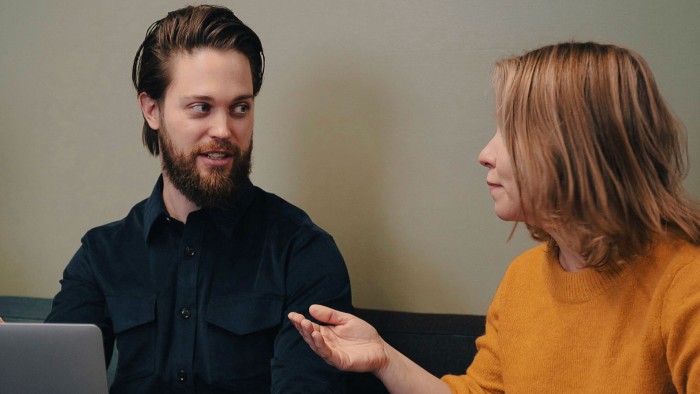Swappie takes top spot on FT ranking with focus on sustainability

Simply sign up to the European companies myFT Digest -- delivered directly to your inbox.
Sami Marttinen got the idea for his start-up after being scammed. He bought a second-hand phone from an internet marketplace but fell victim to fraud. After learning from police how widespread such scams were, an idea formed: why not sell high-quality, refurbished smartphones reliably?
Thus Swappie was founded in 2016 with a quest to turn buying a used smartphone into something as common as buying a second-hand car.
“It’s too big an environmental problem to ignore,” says Marttinen. “Why are only something like 5 per cent of the population purchasing used phones? Why is it not more like used cars, where it’s 50-50 between new and used?”
Swappie is the fastest-growing start-up in Europe, according to the latest edition of the annual FT-Statista ranking, posting a compound annual growth rate of almost 500 per cent between 2017 and 2020. Its 2020 sales were close to €98mn and Marttinen says this number more than doubled again in 2021.
The Finnish start-up recently raised €108mn in funding from investors, and is part of a growing ecosystem of companies sprucing up second-hand goods. Swappie refurbishes and then resells iPhones in 15 countries across Europe, and has already sold more than 1mn of them.
Prices in Finland range from €139 for an iPhone 7 with heavy signs of wear, up to €1,769 for a like-new version of the iPhone 13 Pro Max. All smartphones undergo a 52-step testing process and are refurbished in Swappie’s European factories, receiving a 12-month warranty afterwards. The company does not disclose profitability.
For Marttinen, the key objective was to create trust, so that customers could rely on the company and its phones, rather than worry about being scammed. “We believe we have to give customers an experience that is as good as, or even better than, buying a new phone,” he says. “The majority of our customers are coming to the [second-hand] market for the first time ever.”
More stories from this report
The company also benefits from changing public attitudes. “Sustainability is becoming increasingly important for customers, especially younger generations,” Marttinen says.
He also notes that, now the novelty of smartphones has worn off, there is little difference between each iteration of an iPhone, meaning people are happier to settle for an older version at a cheaper price.
This is another area of similarity with the used car market: as people started to hold on to cars for longer, because successive models offered ever fewer advantages over the ones they replaced, used sales took off. “Sustainability by itself doesn’t drive the movement. But sustainability shouldn’t come at a premium,” says Marttinen.
Swappie has had a busy Covid-19 pandemic, launching in 12 of its 15 countries. Its markets now range from Ireland and Germany to Poland and Estonia. Its headquarters are in Helsinki, while it has two factories for the phones, one in Finland and one in Estonia. Its latest funding round will help it build logistics and refurbishment capabilities closer to customers in central and southern Europe, Marttinen says.
From just four employees at the time of its first funding round, in 2018, Swappie has grown to 1,200. Expansion is currently focused on Germany and Italy, with funds being spent on a marketing campaign to raise awareness of refurbished smartphones.
This strategy is a response to Swappie’s greatest potential headwind: though it has direct rivals, Marttinen believes the biggest threat is new phones, and consumers not taking to second-hand phones as much as he would like.
For now, Swappie is firmly focused on iPhones, but there is a clear sense from Marttinen that other models could be added once it has done as much as it can with the Apple devices in Europe.
“Our mission is to make refurbished electronics mainstream,” he says. “We want to get the flywheel going. And then we’ll look at other things one by one.”
He points out that only about 10 per cent of all smartphone purchases are of used devices, and only a quarter of pre-owned mobiles are sold back to the market. But the refurbished smartphone market is expected to grow about 10 per cent a year up to 2027, and Marttinen is confident Swappie can far outpace that.
“We expect the demand for high-quality refurbished phones to grow incredibly,” he says.
Comments